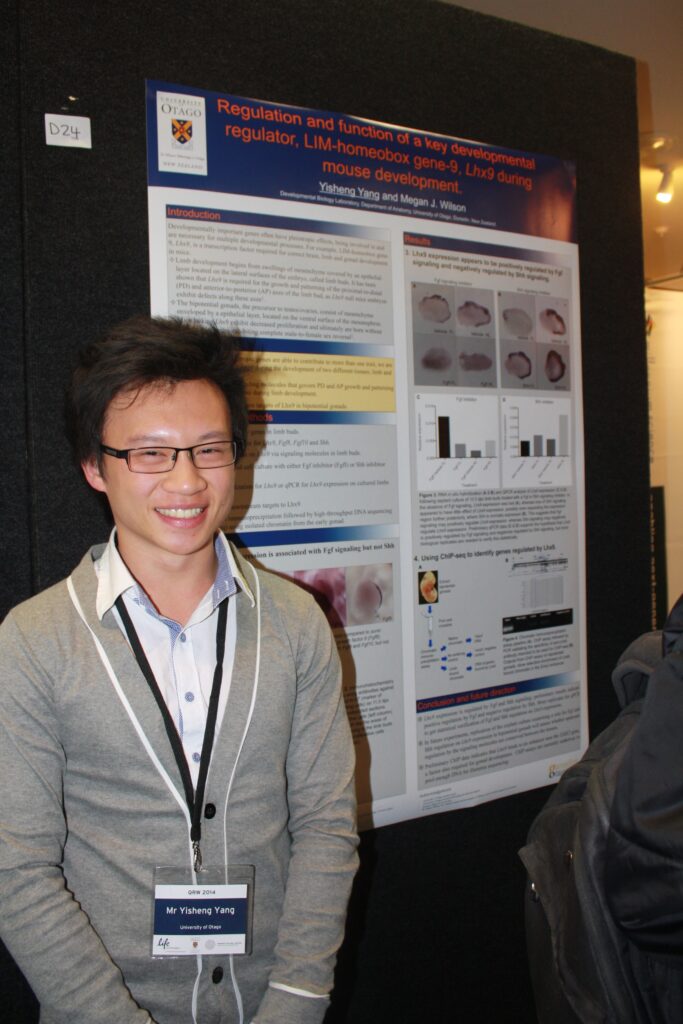Yisheng Yang, PhD student, Department of Anatomy, University of Otago.

Yisheng is a Genetics PhD student studying the formation of the bipotential gonad.
Email:yanyi467@student.otago.ac.nz
Regulation and function of a key developmental regulator, LIM-homeodomain gene-9 (Lhx9) during mouse development
Developmentally important genes often have pleiotropic effects, being involved in and necessary for multiple developmental processes. An example of this is the LIM-homeobox gene, Lhx9, a transcription factor required for correct limb, brain and gonad development. To understand how gene products like Lhx9 can contribute to more than trait, we are determining how Lhx9 functions during development of two very different tissues, limb and gonad. Limb development involves the formation of the adult limb from the progenitor tissue structure known as limb buds, which are swellings of mesenchymal cells covered by epithelium that protrude out laterally from the body. In mice, Lhx9 and its paralogue, Lhx2 are required for proper growth and patterning of the limb bud. Mutation of both genes in a single mouse strain results in defects in the growth and patterning of the proximal-distal (PD) and anterior-posterior (AP) axes of the limb. In comparison, mammalian gonads arise from a common progenitor tissue known as the bipotential gonad, which has the ability to differentiate into either a testis or ovary depending on the genetic compliment of the embryo. The development of this bipotential gonad structure is crucial for sex determination and subsequent sexual differentiation, but very little is known about how this process occurs except Lhx9 is required for proliferation and outgrowth of this tissue.
We also aim to investigate the genes and gene networks that underlie bipotential gonad formation using chromatin immunoprecipitation followed by next generation sequencing (ChIP-seq). By targeting Lhx9, which is known to be required for bipotential gonad development, and histone marks (H3K27me3/H3K4me3(, we will uncover genes that are regulated by Lhx9, and also involved in bipotential gonad formation.
Publications, awards and poster presentations
Yang, Y and Wilson MJ. 2015 Lhx9 gene expression during early limb development in mice requires the FGF signalling pathway. Gene Expression Patterns doi:10.1016/j.gep.2015.07.002
Awards
August 2014 Genetics Otago Poster presentation prize. QMB Reproduction and Developmental Biology meeting. NZ.
March 2013 University of Otago Doctorate Scholarship